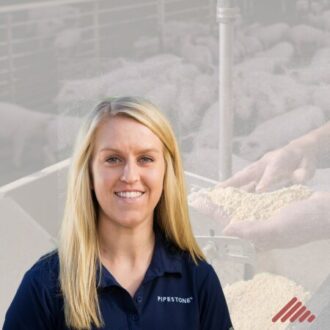“Is my business producing enough profit to be financially sustainable in the future?” is a question that I often receive when visiting with producers. “Show me the numbers,” kind of like “show me the money,” is often my initial response. When I say “numbers” I am really referring to the financial reports. Profitability being a necessity to running your business may be obvious to you, but what are you doing to make sure that your business is profitable and will continue to be in the future? The following definitions and proceeding three steps will allow you to not only “show the numbers” but also allow you to use them in your decision-making.
Profitability – The degree to which a business can consistently produce a profit in the future.
Financial Sustainability – The ability to remain profitable in the short-and long-term and provide comfortable earnings for the employees and owners with the profits earned.
STEP 1: Switching to Accrual Financial Reports
I have often heard “I keep my cash balance low, and my line of credit balance is lower than last year end” or “my cash account balance is higher than last year end, so I know I had a profitable year”. While this could be true from a cash or tax perspective, it may not be true from an accrual or managerial perspective. There are a lot of variables and changes in inventory that take place from year to year and your business may not have made a profit even though the cash account balance is telling you it did. If this is how you currently judge profitability for your business, you may need to switch from the cash method of reporting to the accrual method. This is not an overnight change but will be well worth the effort for the advantages received.
Advantages of Accrual (Managerial) Financial Reports:
- Considers the timing of the revenue and expenses throughout the year and matches the expenses it took to produce that good or service with the revenue that is received when that good or service is sold.
- Allows you to identify your accrual profit month over month by division and evaluate which division of your business is producing that profit.
- Creates a cleaner and more accurate balance sheet where the business’s assets can be seen in comparison to its liabilities.
STEP 2: Reading the Financial Reports
Once you have the financial reports, the next step is learning how to read them. Whether you are producing the reports, or you have hired a third party to produce the reports, you still need to know and understand how to read them so that understand how your decisions will affect them. Four of the main reports you will want to understand are the Balance Sheet, Income Statement, Cash Flow, and CBBE.
- Balance Sheet
Provides an overview of your company’s assets, liabilities, and equity as of a certain date. - Income Statement
Provides the revenue, expenses, and net income for the current month as well as for year-to-date. This can be broken into separate divisions (livestock, crops, etc.) to help you evaluate how much each division is contributing, if at all, to the net income. - Cash Flow
Provides a summary of where the cash came from and where it went. The report looks closely at the operations, debt obligations, and funding to and from investments. - CBBE
Cash Based Break Even is a report that looks at your cash outflows to measure your cash breakeven price. You start with your net income and back out any non-cash line items like depreciation and add back any cash outflow items that would not be included in the net income like principal payments on long-term debt.
STEP 3: Using the Financial Reports
There are a lot of moving parts when it comes to operating any business and a farm is no exception to that. Key business decisions can be stressful and are being made, sometimes daily, on the farm and the financial reports should help by giving you support for those decisions. Below are just a few decisions of many that should be made by using financials.
- Succession Planning
What value am I passing on or selling to the next owner and how does it affect those involved financially? - Expansion and Growth
How much to expand and in what division of the business? - Risk Management
What is my breakeven and how much profit am I locking in for next year? - Financing
How can I get better financing? - Benchmarking
How do my costs and revenue compare to my competitors?
In conclusion, the financials of your business can and should largely influence the decisions that are being made daily. Help reduce the stress and headaches of those decisions by having “the numbers” at your fingertips. Get the financial reports, learn how to read the reports, and then use the reports to manage your business and profitability.











